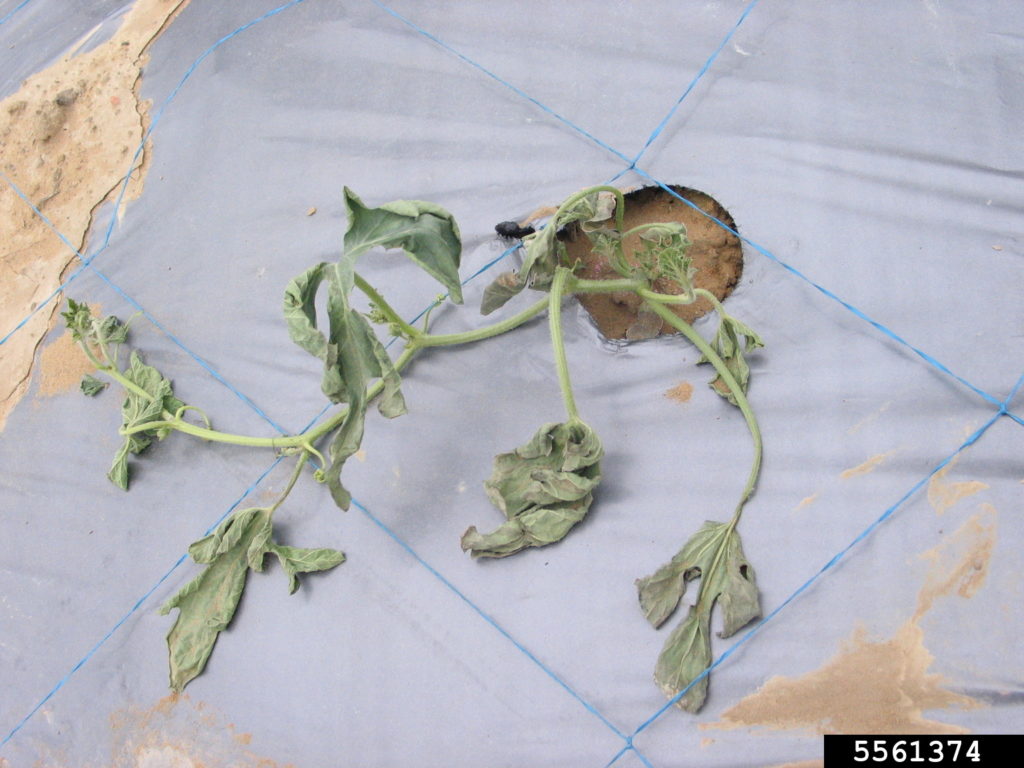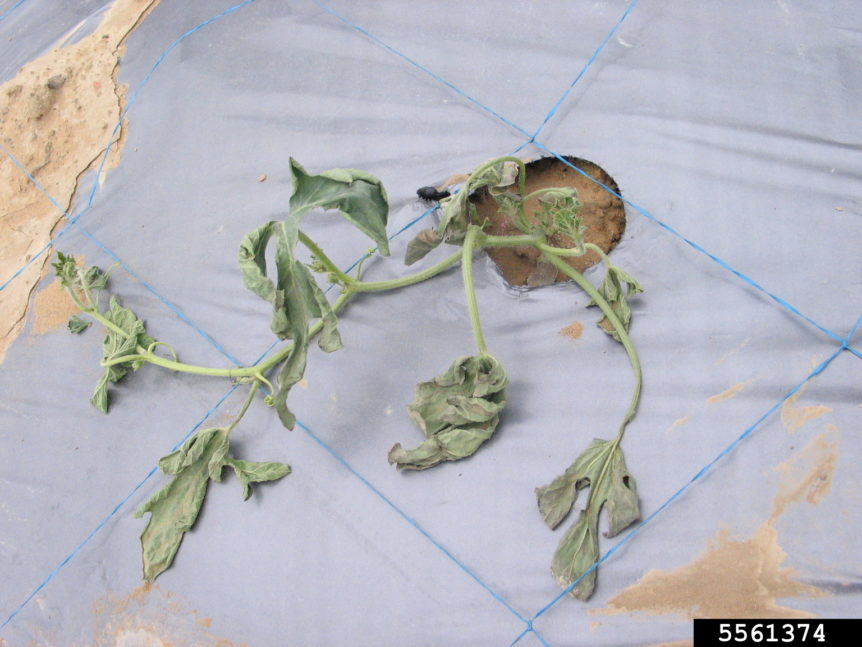
Photo by Cheng-Fang Hong
By Frank Giles
Watermelon production is big business in the Southeast. Florida and Georgia rank No. 1 and No. 2 in production, respectively. According to U.S. Department of Agriculture data, the two states produce half the commercial production in the country.
For growers, the fungal disease fusarium wilt can be the worst problem encountered annually. The fungus can be seedborne, can strike at any stage of the crop and can persist in the soil in fields for up to 20 years.
Fusarium wilt of watermelon is caused by the fungus Fusarium oxysporum f. sp. niveum (FON). The pathogen is host-specific to watermelon and will not cause disease on other closely related cucurbits or non-cucurbit hosts. There are four races of the disease designated by FON 0, 1, 2 and 3. Race 1 is the most widely distributed, but race 2 is emerging in many production areas.
Moderate soil temperatures (77 degrees to 80 degrees) and wet weather favor fusarium wilt development.
Identification
When scouting for fusarium wilt, growers should look for the first symptoms to appear, which are dull gray to green leaves and wilting during the hottest time of day. The wilting often appears on one or more watermelon runners. The disease often shows up in clusters within fields. Infected plants eventually collapse and die.
Other symptoms include reddish-to-brown coloration in the plant crown and in the runners. Root symptoms may be seen later in the infection when the roots turn dark brown, and soft rot occurs. Infected seedlings from transplant houses may die from wilt rapidly before displaying any of the discoloration symptoms. However, infected asymptomatic transplants are an important source of field infection.
Management
There are some commercial watermelon varieties that have resistance to some of the FON races. Many of those varieties have resistance to race 0 and 1. The presence of FON 2 and 3 in fields can reduce the effectiveness of the strategy of planting resistant varieties.
It is critical to start clean with disease-free transplants. In the greenhouse, if infected plants are identified, it is recommended to remove the plant tray the plants are in as well as the adjacent trays.
Crop rotation and fallow periods are key management strategies. According to the research published in the journal Soil Use Management, fusarium wilt levels were reduced by 20%, 40% and 50% after one, two and three years, respectively, of fallow (Wu et al., 2013). According to guidance from the University of Florida Institute of Food and Agricultural Sciences, the common recommendation is there should be a break of five to seven years between watermelon plantings in the same field.
Fumigation remains the most effective choice for chemical control used in conjunction with totally impermeable mulch films. According to Bhabesh Dutta, professor of plant pathology and Extension vegetable disease specialist with the University of Georgia, in heavily infested fields, current chemical management practices are not effective. He adds that some growers have been forced to abandon fields for watermelon production after infections become very severe.
Dutta has been conducting trials with rootstocks which confer resistance to fusarium wilt in watermelon plants. One grafting rootstock, Carolina Strongback, has proven to significantly reduce fusarium wilt when compared to non-grafted watermelon plants in all trial locations. However, he cautions that the rootstock is not immune to fusarium wilt. Plants could become infected under heavy infestations but will still be in better condition than non-grafted fields.
Given the persistence of the disease, the best management strategy is starting clean and staying clean in fields, which is easier said than done. It starts with small but smart cultural practices like taking care not to move soil from infected fields to non-infected fields.










